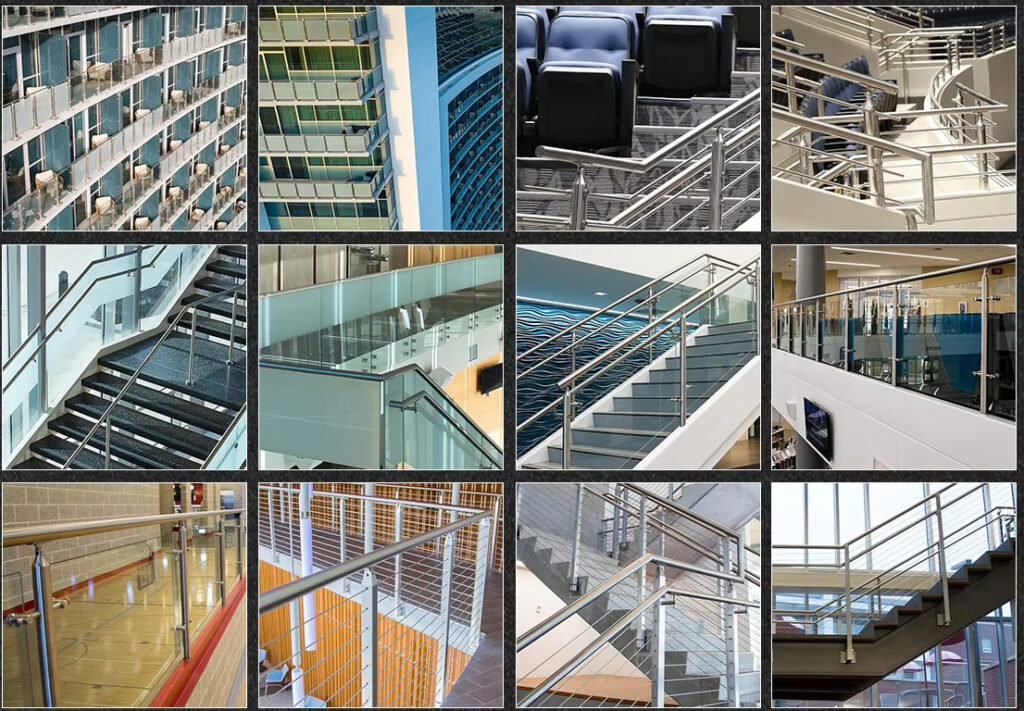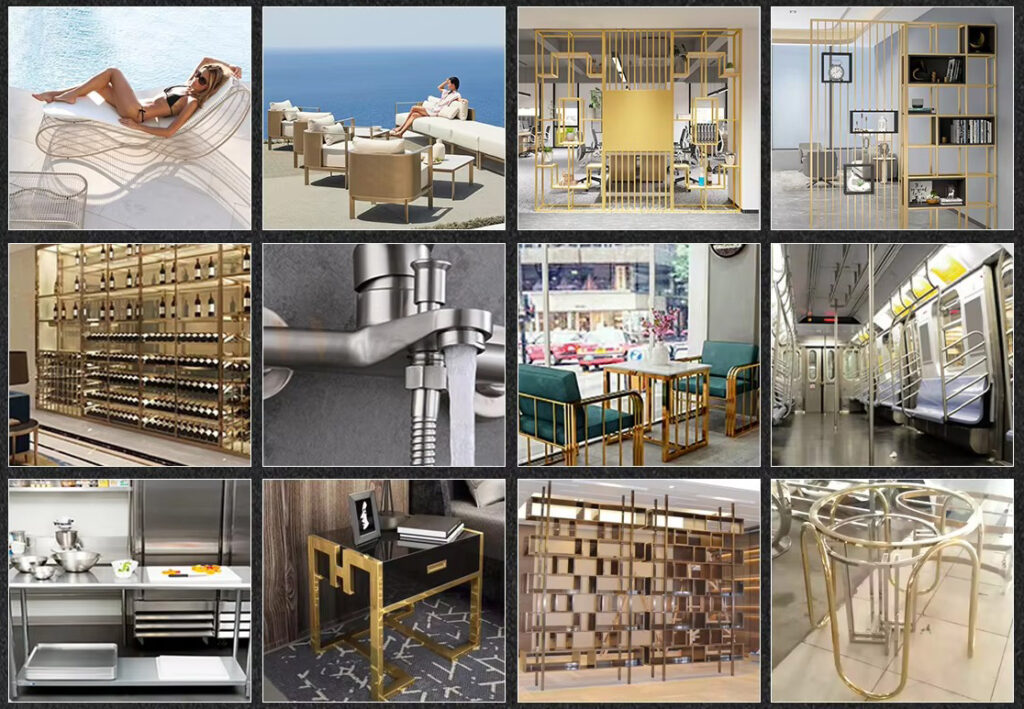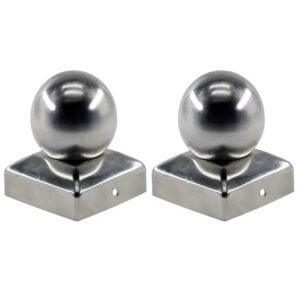
Post caps & end caps (round, square, decorative)
Post caps & end caps in 316L stainless steel. 23 years precision manufacturing for decorative applications worldwide. Request quote today.

Post caps & end caps in 316L stainless steel. 23 years precision manufacturing for decorative applications worldwide. Request quote today.
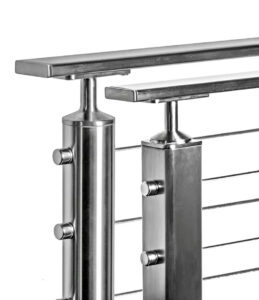
Square stainless steel posts in 304/316L grades. 23 years precision manufacturing for coastal projects worldwide. Request quote today.
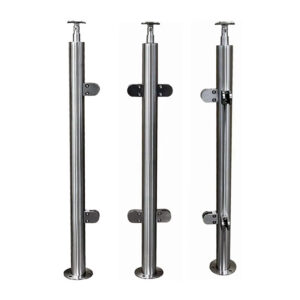
Stainless steel posts in 304/316L grades. 23+ years ODM fabrication for marine & commercial applications. Contact factory today.
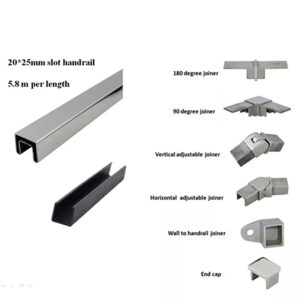
Square top rail components in 316L stainless steel. 23+ years precision manufacturing for global applications. Contact factory today.
Project-specific hardware in 316L stainless steel. 23 years delivering tailored solutions for specialized projects worldwide. Get factory quote today.
Non-standard size components in 316L stainless steel. 23+ years ODM manufacturing for unique sizing requirements globally. Contact us today.
| Specification | Standard Grade 304 | Marine Grade 316 | Competitive Advantage |
|---|---|---|---|
| Material Composition | 18% Chromium, 8% Nickel | 18% Chromium, 10% Nickel, 2-3% Molybdenum | Enhanced molybdenum content for marine applications |
| Wall Thickness | 3mm – 6mm | 3mm – 6mm | 50% thicker than standard aluminum brackets |
| Load Capacity | 500 lbs vertical, 250 lbs lateral | 600 lbs vertical, 300 lbs lateral | Exceeds standard building code requirements |
| Post Compatibility | 1.5″ – 4″ round/square posts | 1.5″ – 4″ round/square posts | Universal fit for multiple post diameters |
| Mounting Hardware | Stainless steel bolts included | Marine-grade 316 hardware | Complete hardware kit eliminates compatibility issues |
| Surface Finish | Brushed Satin, Mirror Polish | Brushed Satin, Mirror Polish | Consistent Ra 0.4-0.8μm finish quality |
| Corrosion Resistance | 15-20 years outdoor | 25+ years marine environment | 3-5x longer lifespan than aluminum brackets |
| Temperature Range | -40°F to 200°F | -40°F to 200°F | Superior thermal stability vs plastic alternatives |
Superior Structural Integrity
Stainless steel post mount brackets provide exceptional load-bearing capacity compared to aluminum alternatives that may fail under stress. Our 316-grade brackets withstand 600 lbs vertical loading, significantly exceeding the 250-500 lb capacity of standard aluminum brackets commonly used in the industry.
Corrosion-Resistant Performance
Unlike galvanized steel brackets that require periodic refinishing, stainless steel post mount brackets maintain their structural integrity and appearance for decades without maintenance. The passive oxide layer naturally regenerates, eliminating the rust and degradation issues that plague carbon steel brackets within 5-7 years of installation.
Precise Manufacturing Tolerances
Our CNC-machined brackets ensure consistent fit and alignment, reducing installation time and eliminating field modifications required with cast aluminum brackets. Precision-drilled mounting holes accept standard hardware without enlarging or reinforcement, maintaining structural integrity throughout the bracket’s service life.
Temperature Stability
Stainless steel brackets maintain dimensional stability across extreme temperature variations, unlike plastic brackets that become brittle in cold weather or aluminum brackets that experience thermal expansion issues. This stability ensures consistent mounting performance in climates ranging from arctic conditions to desert environments.
Marine Dock and Marina Systems
Saltwater environments demand 316-grade stainless steel post mount brackets for dock handrails, boat lift controls, and navigation equipment mounting. Our marine-grade brackets resist chloride corrosion that destroys aluminum alternatives within 3-5 years, providing 20+ year service life in harsh coastal conditions.
Commercial Building Signage
Office complexes, shopping centers, and healthcare facilities require durable post mount brackets for directional signage, wayfinding systems, and regulatory displays. Stainless steel brackets eliminate the ongoing maintenance costs associated with painted steel or aluminum brackets that require refinishing every 3-5 years.
Industrial Equipment Mounting
Manufacturing facilities utilize heavy-duty post mount brackets for machinery guards, safety equipment, and process instrumentation. The superior load capacity and vibration resistance of stainless steel brackets ensure reliable performance in high-stress industrial environments where bracket failure could compromise worker safety.
Residential Deck and Patio Railings
Homeowners choose stainless steel post mount brackets for deck railing systems, pool area handrails, and garden structures. The aesthetic appeal and maintenance-free performance justify the initial investment, eliminating the recurring costs and appearance issues associated with powder-coated aluminum brackets.
Highway and Traffic Control Systems
Municipal installations rely on stainless steel post mount brackets for traffic signs, highway barriers, and street lighting fixtures. The superior durability reduces replacement frequency and maintenance disruptions compared to galvanized steel brackets that require regular inspection and replacement due to corrosion.
Q: What’s the load capacity difference between 304 and 316 stainless steel post mount brackets?
A: Both grades offer similar mechanical strength with 304 providing 500 lbs vertical capacity and 316 offering 600 lbs vertical capacity. The primary difference lies in corrosion resistance – 316 grade contains molybdenum for superior performance in marine and chloride-rich environments.
Q: How do stainless steel post mount brackets compare to aluminum for outdoor applications?
A: Stainless steel brackets outlast aluminum by 300-500% in outdoor environments. While aluminum may corrode and weaken within 5-10 years, properly specified stainless steel maintains full strength for 20+ years. Initial costs are 40-60% higher, but lifecycle costs favor stainless steel due to eliminated replacement needs.
Q: Can post mount brackets be retrofitted to existing aluminum or steel posts?
A: Yes, our brackets accommodate standard post sizes from 1.5″ to 4″ diameter in both round and square configurations. Existing posts must be structurally sound and properly anchored to support the intended loads. We provide specific hardware recommendations for different post materials.
Q: What maintenance is required for stainless steel post mount brackets?
A: Minimal maintenance is required – periodic cleaning with mild soap and water maintains appearance. Marine environments benefit from monthly freshwater rinses to remove salt deposits. Unlike painted or powder-coated brackets, stainless steel never requires refinishing or protective coatings.
Q: How do you determine proper bracket spacing for multi-point mounting applications?
A: Bracket spacing depends on load type, post height, and wind exposure. For handrail applications, brackets typically space 4-6 feet apart for 304 grade and up to 8 feet for 316 grade. High-wind or seismic zones may require closer spacing per local building codes.
Q: Are post mount brackets suitable for high-temperature applications like industrial equipment?
A: Stainless steel brackets perform excellently in high-temperature environments up to 200°F continuous service. Unlike plastic brackets that soften or aluminum brackets that lose strength at elevated temperatures, stainless steel maintains full load capacity throughout its temperature range.
Q: What’s the difference between surface mount and post mount bracket installation?
A: Post mount brackets attach directly to vertical posts, providing side-mounted support for handrails, signs, or equipment. Surface mount brackets attach to horizontal surfaces like decks or floors. Post mount installation typically requires fewer mounting points and provides better clearance from walking surfaces.
Q: How do post mount brackets perform in seismic or high-wind environments?
A: Properly engineered stainless steel post mount brackets exceed seismic and wind load requirements when installed per structural specifications. The ductile properties of stainless steel provide superior performance compared to brittle cast aluminum or rigid plastic brackets that may fail catastrophically under dynamic loads.
Industry Standards Compliance
Our post mount brackets conform to ASTM A240 specifications for stainless steel plate materials and ASTM A276 for bar stock components. All brackets undergo load testing per AISC 360 structural steel requirements, ensuring compliance with International Building Code provisions for structural connections and safety factors.
Building Code Conformance
Post mount bracket installations satisfy IBC Section 1607 for live load requirements and Section 1613 for seismic design when properly specified and installed. Load capacity documentation demonstrates compliance with ADA handrail requirements and OSHA fall protection standards for industrial applications.
Material Certifications
Grade 316L stainless steel contains minimum 16% chromium, 10% nickel, and 2% molybdenum per ASTM specifications, providing superior corrosion resistance compared to standard grades. Mill test certificates verify chemical composition and mechanical properties, ensuring consistent quality control and traceability for each production lot.
Quality Management Standards
Manufacturing processes follow ISO 9001:2015 quality management protocols with documented procedures for material handling, fabrication, and inspection. Welded brackets undergo non-destructive testing per AWS D1.6 stainless steel welding code to ensure structural integrity and weld quality.
Corrosion Testing Verification
Grade 316 post mount brackets exceed ASTM B117 salt spray testing requirements, demonstrating no visible corrosion after 2000+ hours of exposure. Comparative testing shows aluminum brackets exhibit significant pitting and strength loss after 500 hours, while stainless steel maintains original properties throughout extended exposure periods.
Load Testing Documentation
Each bracket design undergoes proof load testing at 150% of rated capacity with ultimate load testing to failure per AISC specifications. Safety factors of 2.5:1 minimum ensure reliable performance under code-specified loads with adequate margin for dynamic loading conditions and material variations.

